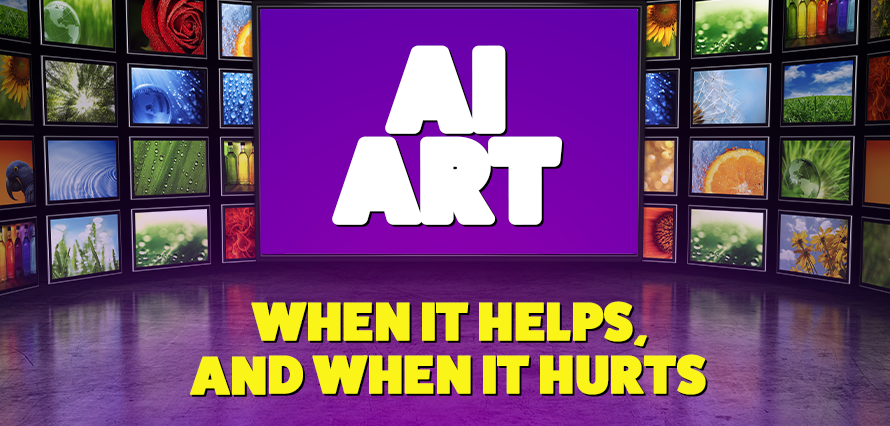October 23, 2025

Open your feed today and you’ll probably scroll past dozens of AI-generated images and videos. Some are clever, some are beautiful, and some are just off. AI can be both a time-saver and a trust-breaker. Used well, it accelerates creativity. Used carelessly, it can make campaigns feel soulless and detached from the people they’re meant to reach.
When AI is an Ally
Used intentionally, AI can be a designer’s most powerful assistant. It’s perfect for early concept work, sketching layouts, testing colours, or generating quick background elements. It speeds up production and gives teams room to explore more creative directions before committing time to manual refinement. In this way, AI enhances efficiency without diluting brand authenticity.
When a designer uses AI as a creative extension, not a replacement, the results feel both modern and meaningful.
The Problem with “Bad” AI Visuals
AI-generated visuals often stumble not because of technical flaws, but because they lack emotional depth. The lighting looks perfect, the models flawless, yet the result feels oddly cold. That’s not just a hunch; many consumers describe AI-generated ads as “boring” or “confusing” compared to human-made visuals, and people remember them less clearly. Studies confirm what designers often feel instinctively: AI without human oversight can flatten a brand’s voice. When every image feels manufactured, audiences start tuning out.
The biggest risk of letting AI lead entire campaigns isn’t technical; it’s emotional. When visuals are generated entirely by algorithms, the sense of humanity disappears. Viewers might not consciously notice it, but subconsciously, they register that something is missing. Over time, that detachment erodes trust and engagement.
Studies show that nearly 90% of consumers want transparency about whether an image is AI-generated (Getty Images Report, 2024). And when brands fail to disclose, it can backfire; people feel deceived, even if the image looks beautiful. In short, full-AI campaigns might look impressive on the surface, but they often leave audiences emotionally unmoved.
Users Are Starting to Push Back
Audiences are already taking action to filter synthetic content out of their online experiences. Guides like this one from Asurion show users how to disable Meta AI or Snapchat’s “My AI,” helping them remove automated content from their feeds. This shift reflects a deeper frustration; people are tired of feeds that feel more algorithmic than human. It’s a clear signal to marketers: audiences value authenticity, and they’re willing to take steps to protect it.
A Human-First, AI-Assisted Future
AI isn’t the enemy of creativity; it’s a new layer of it. But like any design tool, it’s only as good as the person using it. The best creative work still comes from empathy, story, and intuition, qualities no machine can fully replicate.
Here at Immediatefuture, we understand these challenges well and know how to utilise AI responsibly to maximise its benefits, enhancing your ideas, without replacing your instincts. Get in touch with us if your goal isn’t to make human creativity obsolete, but to amplify it. When the final work still feels crafted by real people, audiences can tell, and they will respond to it.